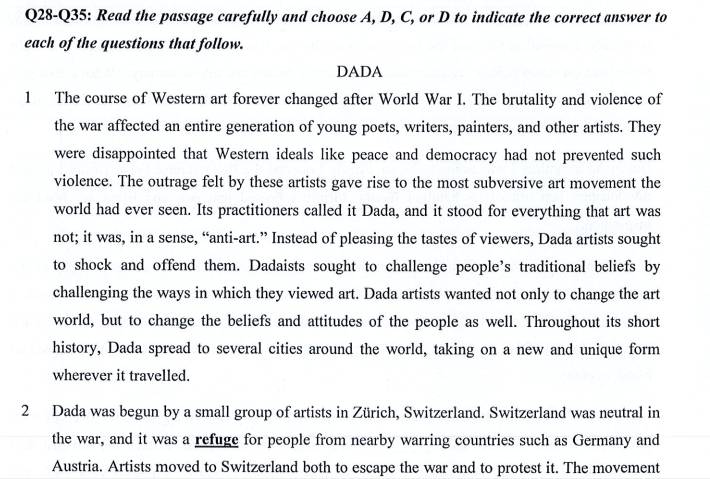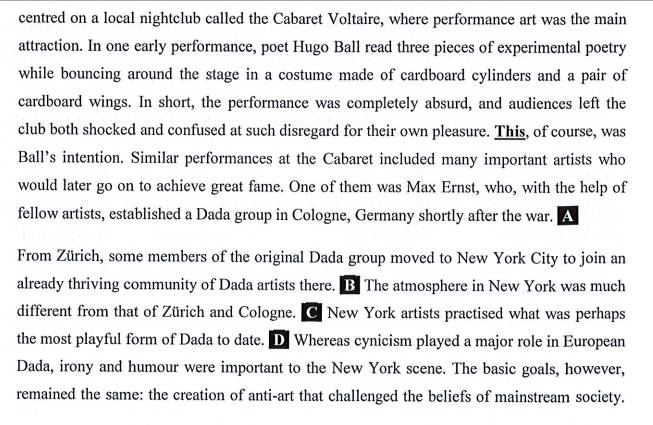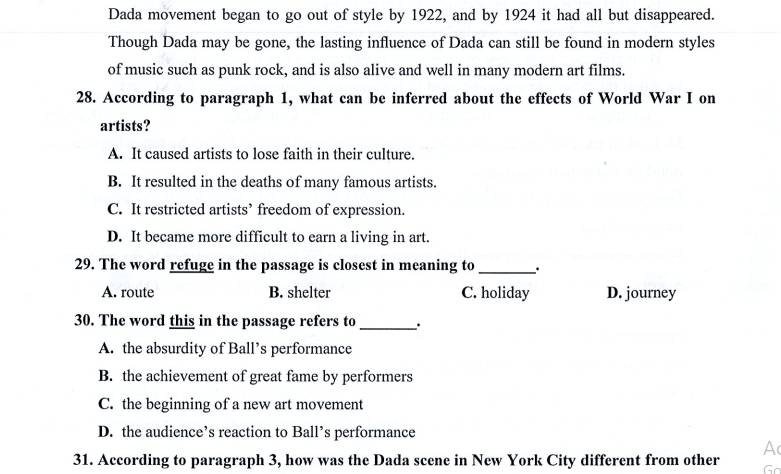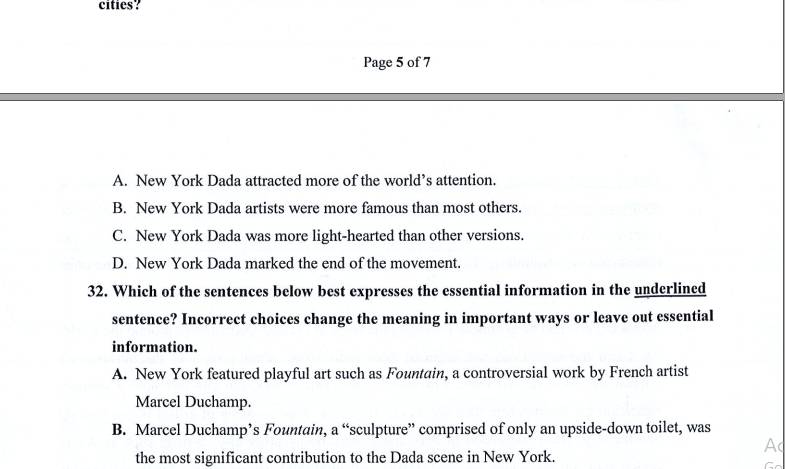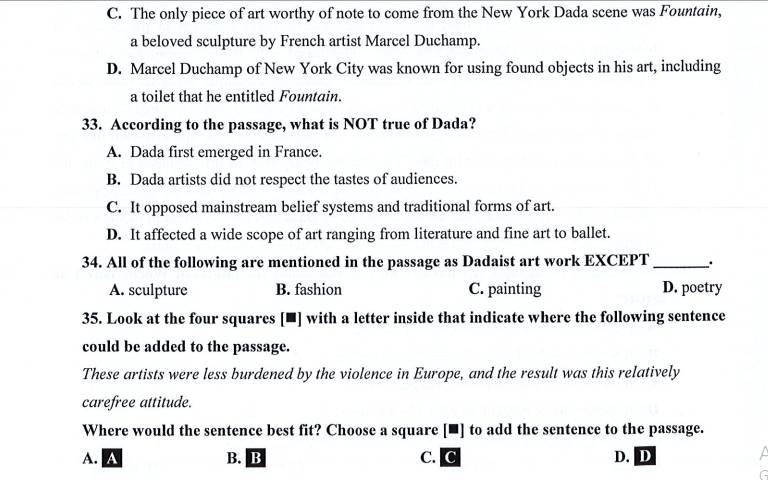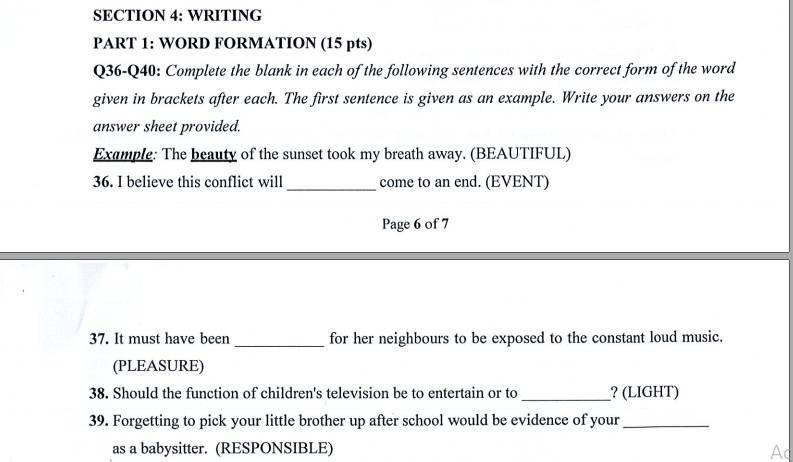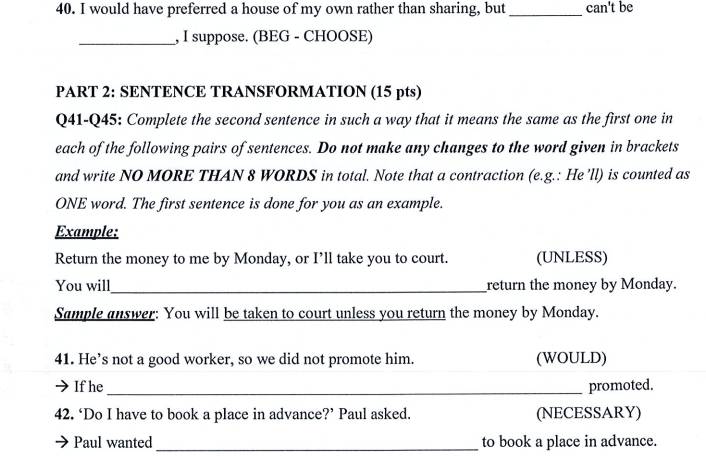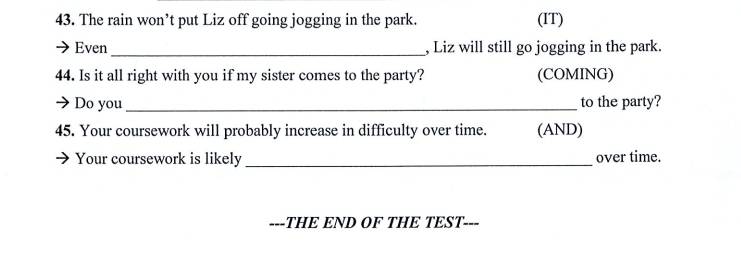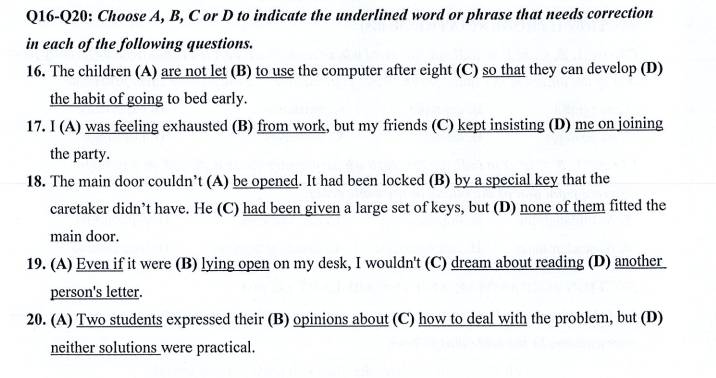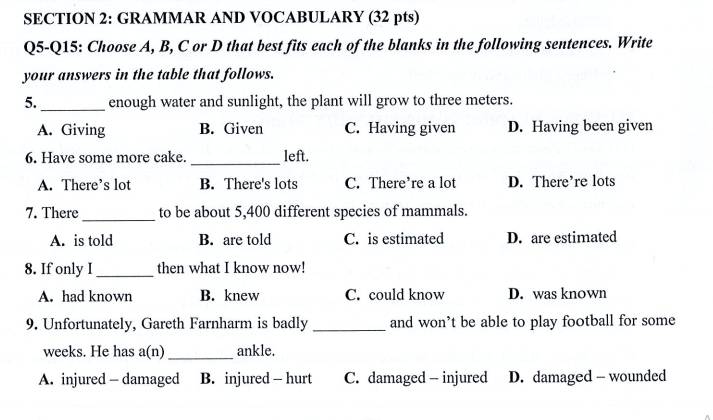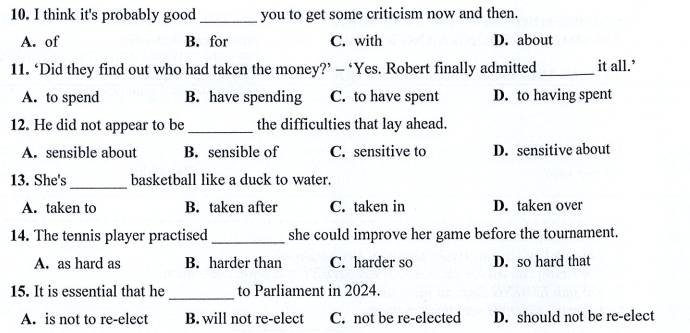Học tại trường
Chưa có thông tin
Đến từ
Chưa có thông tin , Chưa có thông tin
Số lượng câu hỏi
44
Số lượng câu trả lời
8
Điểm GP
0
Điểm SP
2
Người theo dõi (2)
Đang theo dõi (3)


Q5-Q15: Choose A, B, C or D that best fits each of the blanks in the following sentences. Write
your answers in the table that follows.
5: We have provided you ______ different kinds of materials and put an emphasis ______ the
importance ______ visual ones.
A. with_on_of B. for_on_on C. with_for_on D. in_in_of
6: ___________ in the library for three hours, I finally found the book I needed.
A. Having been searched B. Having been searching
C. Had been searching D. Had searched
7: By the time she _____ home tonight, her mother ________ dinner for an hour.
A. gets_will have been cooking B. got_would cook
C. will get_will cook D. got_cooked
8: _____________, do not hesitate to ask me immediately.
A. Should you need any assistance B. If any assistance
| C. Do you need any assistance | D. Would you need any assistance |
2
9: I forgot _________the car, so I got back to the garage and checked whether I had done it.
A. to lock B. having locked C. have locked D. had locked
10: The government has promised to ________ measures to address the issue of climate change.
A. bring about B. bring down C. bring forward D. bring off
11: __________ is the practice of using resources in a way that meets the needs of the present
without compromising the ability of future generations to meet their own needs.
A. Reclamation B. Conservation
C. Preservation D. Sustainable development
12: The _____________ of the language ________ in the document was a barrier to its
understanding.
A. simplicity_ used B. complexity_ used
C. ease_using D. fluency_using
13: A ___________ is a person who is responsible for gathering and reporting ________ for a
newspaper, magazine, or news organization.
A. commentator_contracts B. correspondent_ news stories
C. columnist_ new stories D. anchor_advertisements
14: In the world of journalism, ___________ refers to the practice of presenting news stories in a
way that is biased or slanted ____________ a particular political or social viewpoint.
A. objectivity_ in favor to B. impartiality_for favor of
C. sensationalism_ in favor of D. transparency_for favor to
15: I have got two brothers, ________ will be here to attend my wedding party due to their invalid
visas.
A. neither of them B. none of whom C. neither of whom D. none of them
Q16-Q20: Choose A, B, C or D to indicate the underlined word or phrase that needs correction in
each of the following questions.
16: By the time she (A) will come to the US for her (B) further studies next fall, she (C) will have
been studying English (D) for almost 5 years.
17: The teacher (A) came in, divided us (B) into four groups of five people and asked us to discuss
(C) about the topic given (D) earlier in her last class.
18: Ms. Ann is (A) the teacher who (B) called for an ambulance when a friend of mine (C) was
fainted in the school yard (D) at recess.
19: If Tom (A) had taken his father’s (B) advice to study medicine after he (C) finished high school,
he (D) would have been a doctor now.
20: He phoned and (A) told to me that he (B) would not attend (C) the reception tonight (D) because
of his headache.








